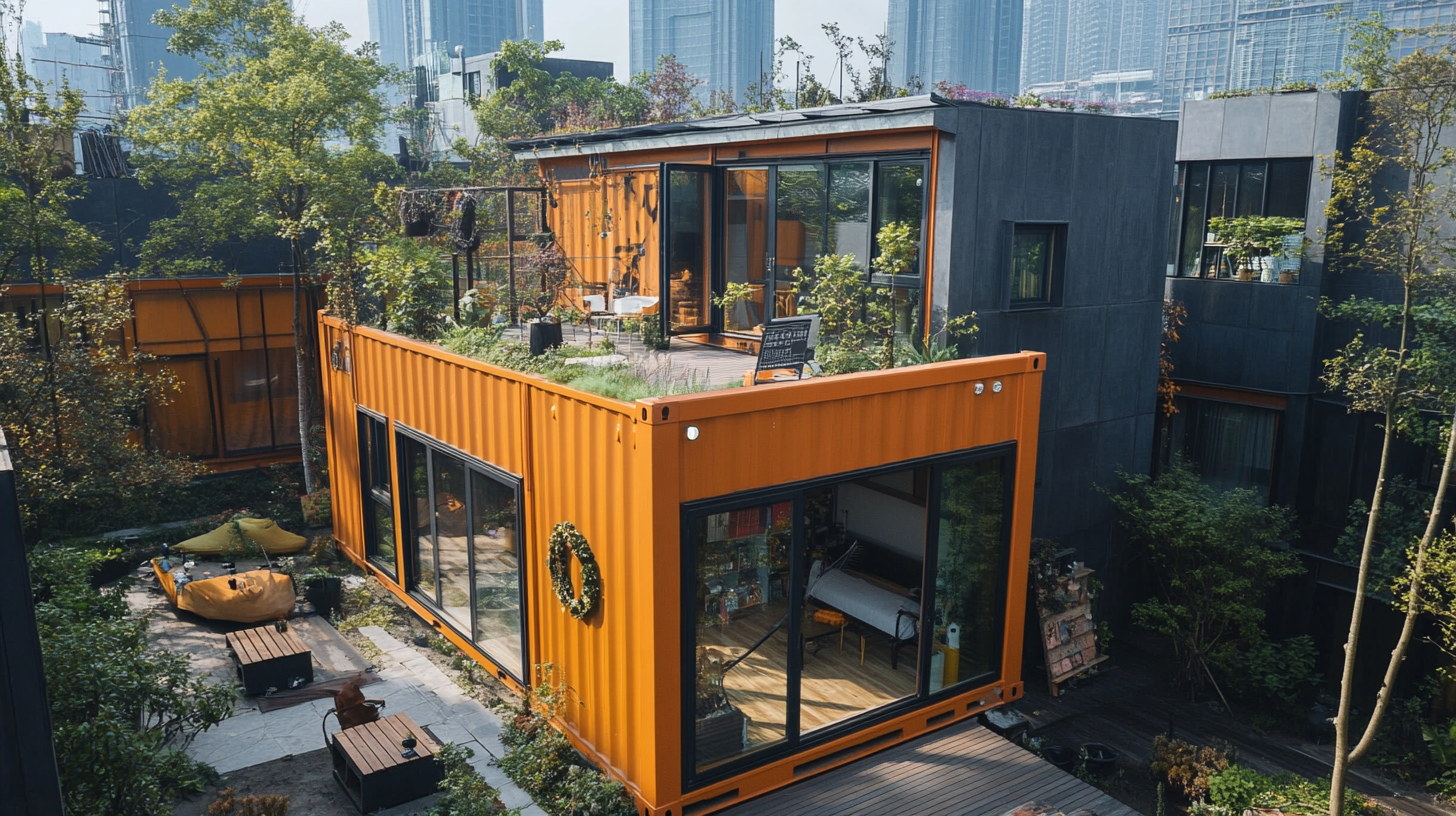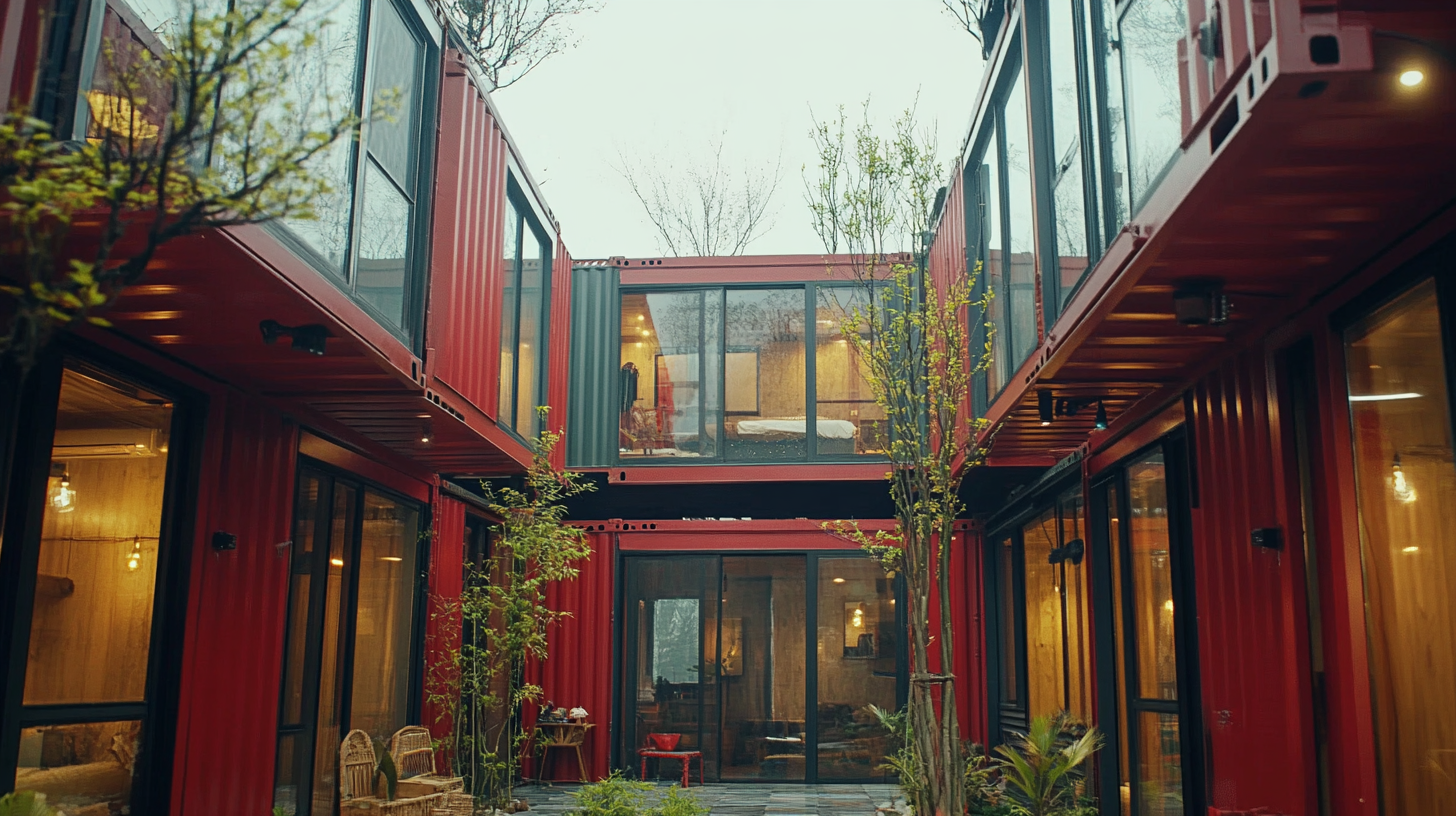
News
Navigating Tariff Challenges: How China's Best Capsule Container Houses Thrive Amidst US-China Trade Tensions
In the context of heightened US-China trade tensions, the construction industry is witnessing a remarkable shift, particularly with the emergence of innovative housing solutions like the Capsule Container House. According to a recent market analysis, the global container housing market is projected to grow at a compound annual growth rate (CAGR) of 7.6% from 2021 to 2028, driven by a rising demand for sustainable and cost-effective living options. In China, manufacturers have adopted strategic measures to navigate the complexities of tariff challenges, allowing them to maintain competitive pricing and expand their market share despite adverse economic conditions. The resilience of China's Capsule Container House industry is a testament to its ability to not only withstand external pressures but also thrive by leveraging technology, eco-friendly practices, and adaptable designs that resonate with both domestic and international buyers. This blog will explore the key strategies employed by these manufacturers to flourish amidst such trade dynamics.

Understanding the Impact of US-China Trade Tensions on Tariffs
The ongoing trade tensions between the US and China have resulted in fluctuating tariffs that significantly impact various industries. For manufacturers and exporters, these changes can create a precarious balance between maintaining competitive pricing and ensuring compliance with new regulations. In the realm of construction and housing, particularly with innovative products like capsule container houses, navigating these tariffs becomes crucial. The costs imposed on materials and shipping can directly affect project feasibility and overall profitability, forcing businesses to adapt rapidly or risk losing market share.
In this challenging landscape, some Chinese companies have thrived by employing strategic measures to mitigate the adverse effects of tariffs. By optimizing supply chains, diversifying their markets, and investing in localized production, they position themselves to not only absorb the impact of tariffs but also capitalize on opportunities that arise from the shifting trade dynamics. Understanding and adapting to these trends allow them to continue providing affordable, innovative housing solutions while staying competitive in both domestic and international markets.
Navigating Tariff Challenges: Capsule Container Houses Market Share Amidst US-China Trade Tensions
Innovative Strategies Used by Capsule Container House Manufacturers
Amid the escalating US-China trade tensions, capsule container house manufacturers have developed innovative strategies to sustain their growth. These manufacturers have embraced advanced materials and modular construction techniques to enhance their product appeal while minimizing costs. By focusing on eco-friendly designs and sustainable materials, they not only cater to the rising demand for greener living solutions but also differentiate themselves in a crowded market.
Moreover, these manufacturers have prioritized flexible supply chain management, leveraging local sourcing and diversified production networks to mitigate tariff impacts. By establishing partnerships with suppliers in various regions, they ensure a steady flow of components without heavy reliance on imports subject to tariffs. This adaptability allows them to maintain competitive pricing and meet customer demands efficiently.
On the marketing front, capsule container house manufacturers are showcasing their products as versatile solutions for urban living, vacation rentals, and disaster relief housing. They utilize targeted marketing campaigns to highlight the benefits of capsule living, appealing to a broad audience, including environmentally conscious consumers and those seeking affordable housing solutions. This multifaceted approach ensures they thrive amidst challenging tariff landscapes.
Navigating Tariff Challenges: How China's Best Capsule Container Houses Thrive Amidst US-China Trade Tensions
| Manufacturer | Location | Annual Production (Units) | Export Markets | Innovative Strategy |
|---|---|---|---|---|
| EcoCapsule Co. | Zhejiang | 30,000 | USA, Canada, Australia | Focus on eco-friendly materials |
| Modular Homes Inc. | Shanghai | 25,000 | Europe, Asia | Partnerships with local builders |
| SmartSpace Ltd. | Guangdong | 40,000 | South America, Asia | Customization options for international clients |
| GreenFlex Container Homes | Henan | 20,000 | Middle East, Africa | Utilizing AI for design efficiency |
| Container Living Solutions | Beijing | 15,000 | North America, Europe | Focus on modular construction techniques |
Case Studies: Successful Chinese Companies Navigating Tariff Challenges
Amid escalating trade tensions between the US and China, several Chinese companies have found innovative ways to navigate the challenges posed by tariffs. One notable example is a company specializing in capsule container houses, which has not only adapted its pricing strategy but also diversified its supply chain. By sourcing materials from countries outside of the US, they have significantly reduced their vulnerability to tariffs. This proactive approach has allowed them to maintain competitive pricing while continuing to serve their American clients.
Another case study highlights a tech firm that focused on product differentiation to mitigate tariff impacts. By enhancing the quality and uniqueness of their offerings, they were able to justify higher prices, making the tariffs less painful for their customers. Additionally, they invested in marketing campaigns that emphasized the value and sustainability of their products, which resonated well with a socially conscious consumer base. This strategy not only strengthened their market position but also fostered customer loyalty during a challenging economic period.

The Role of Quality and Design in Competing Globally Post-Tariff
In the evolving landscape of international trade, the fallout from US-China tariffs has posed significant challenges for manufacturers across various sectors. In particular, the capsule container house industry has had to recalibrate its strategies to remain competitive on a global scale. Reports indicate that around 25% of companies in the sector have experienced increased production costs due to tariffs, compelling them to pivot towards prioritizing quality and innovative design to maintain their market position.
Quality has emerged as a key differentiator that allows capsule container house manufacturers to justify higher price points despite tariffs. According to a 2022 market analysis by Smithers Pira, products with superior durability and energy efficiency can see up to a 30% increase in demand, even in challenging markets. Additionally, the integration of smart technology into designs has become essential. A recent study by MarketsandMarkets forecasted that the smart home sector would reach $174 billion by 2025, emphasizing the rising consumer expectation for high-tech, aesthetically pleasing solutions. As a result, companies that harness these trends not only shield themselves from tariff impacts but also capture the attention of a more discerning global customer base.
Navigating Tariff Challenges: Capsule Container Houses from China
This chart represents the sales growth of China's best capsule container houses over a span of three years, illustrating how they have thrived amidst US-China trade tensions. The data highlights the impact of quality and design on their global competitiveness post-tariff.
Future Trends: Adapting to Ongoing Trade Dynamics Between the US and China
As US-China trade tensions continue to evolve, businesses must adapt to shifting tariffs and regulations to remain competitive. In this dynamic environment, China's capsule container houses have found innovative ways to thrive. These modular structures are particularly appealing for their quick assembly and energy efficiency, allowing producers to minimize costs while maintaining quality. By focusing on sustainable materials and flexible designs, these companies can navigate the complexities of trade dynamics and meet the demands of an increasingly discerning market.
Looking ahead, adaptability will be crucial for all sectors affected by these tumultuous trade relationships. Businesses that leverage technology and foster strong supply chain networks can mitigate risks associated with rising tariffs. The use of advanced manufacturing techniques and local sourcing will not only reduce reliance on foreign imports but also enhance operational efficiency. As the landscape continues to change, companies that embrace innovation and prioritize adaptability will be better positioned to thrive in a competitive global marketplace, paving the way for future growth even amidst ongoing trade challenges.

